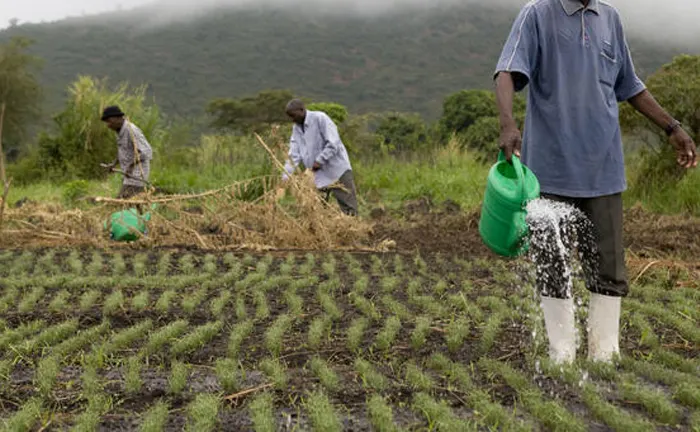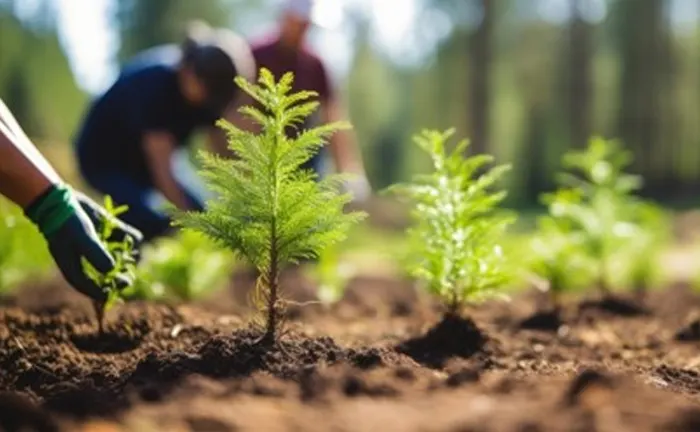7 Proven Ways to Reduce Your Environmental Impact
- August 23, 2024
- 0 comment
The environmental impact of human activities has become a critical issue in today’s world. From the depletion of natural resources to the increasing levels of pollution and climate change, the effects of our actions are evident. Reducing our environmental footprint is no longer just an option; it is a necessity. This article will explore seven proven ways you can reduce your environmental impact, contributing to a healthier planet and a sustainable future.

List of 7 Proven Ways to Reduce Your Environmental Impact:
- Minimize Energy Consumption
- Adopt Sustainable Transportation
- Reduce, Reuse, Recycle
- Choose Sustainable Products
- Conserve Water
- Support Reforestation and Conservation Efforts
- Reduce Meat Consumption and Go Plant Based
Reducing Your Environmental Impact
Reducing your environmental impact involves making conscious choices to minimize the negative effects of your daily activities on the planet. These actions can range from simple lifestyle changes, like conserving energy and water, to more significant commitments, such as adopting sustainable transportation and reducing waste. By focusing on areas like energy consumption, waste reduction, sustainable product choices, and supporting conservation efforts, you can significantly lower your carbon footprint and contribute to a healthier environment. Whether through small steps like recycling and reusing items or more extensive changes like reducing meat consumption and using renewable energy, each effort plays a crucial role in protecting the earth for future generations.
1. Minimize Energy Consumption
One of the most effective ways to reduce your environmental impact is by minimizing energy consumption. Energy production is one of the largest sources of greenhouse gas emissions, contributing significantly to global warming. By taking steps to use energy more efficiently, you can reduce your carbon footprint and help combat climate change.

- Energy Efficiency in Homes: Start by making your home more energy-efficient. This can be done by upgrading to energy-efficient appliances, insulating your home to reduce heating and cooling costs, and using LED lighting instead of incandescent bulbs. Simple actions like turning off lights when not in use and unplugging devices can also make a big difference.
- Renewable Energy Sources: Consider investing in renewable energy sources such as solar or wind power. Installing solar panels on your roof or purchasing green energy from your utility provider can significantly reduce your reliance on fossil fuels. Renewable energy is not only better for the environment, but it can also save you money in the long run.
- Reducing Energy Use in Daily Activities: Be mindful of your energy consumption in your daily activities. Simple actions like using a programmable thermostat, air-drying clothes instead of using a dryer, and reducing water heating can lower your energy usage. By being conscious of how much energy you use and taking steps to reduce it, you can have a significant impact on the environment.
2. Adopt Sustainable Transportation
Transportation is another major contributor to environmental degradation, with emissions from vehicles being a leading cause of air pollution and greenhouse gases. Adopting sustainable transportation methods can help reduce your environmental impact.

- Benefits of Public Transport: Using public transportation, such as buses, trains, or subways, can significantly reduce the number of vehicles on the road, leading to lower emissions. Public transport is often more energy-efficient and can help reduce traffic congestion and air pollution.
- Cycling and Walking as Alternatives: Whenever possible, opt for cycling or walking instead of driving. These modes of transportation produce zero emissions and have the added benefit of improving your physical health. For short trips, walking or biking is not only environmentally friendly but also cost-effective.
- Electric and Hybrid Vehicles: If you need a car, consider purchasing an electric or hybrid vehicle. These vehicles produce fewer emissions than traditional gasoline-powered cars and are becoming increasingly affordable and accessible. Electric vehicles, in particular, have the potential to be powered by renewable energy, making them an even greener option.
- Carpooling and Ride-Sharing: Carpooling with friends, family, or coworkers can reduce the number of vehicles on the road, leading to fewer emissions. Ride-sharing services are also a great option, allowing you to share rides with others going in the same direction, thereby reducing your carbon footprint.
3. Reduce, Reuse, Recycle
The principles of reducing, reusing, and recycling are fundamental to minimizing waste and conserving resources. By embracing these practices, you can significantly lower your environmental impact.

- Importance of the Three R’s: Reducing waste at the source is the most effective way to lessen your environmental footprint. By purchasing only what you need and avoiding single-use items, you can minimize the amount of waste you generate. Reusing items instead of discarding them extends their life cycle and reduces the demand for new products. Recycling helps to conserve resources by turning old materials into new products, reducing the need for raw materials.
- Strategies for Reducing Waste: Start by assessing your consumption habits. Opt for products with minimal packaging, buy in bulk to reduce packaging waste, and choose reusable items over disposable ones. Composting organic waste is another great way to reduce the amount of waste sent to landfills.
- Innovative Ways to Reuse Everyday Items: Get creative with reusing items. For example, glass jars can be repurposed as storage containers, old clothes can be turned into cleaning rags, and cardboard boxes can be used for organizing or crafting. Reusing not only saves resources but also reduces the energy and emissions associated with manufacturing new products.
- Understanding Recycling Best Practices: While recycling is important, it’s essential to do it correctly. Make sure you know what materials are recyclable in your area and how to properly prepare them for recycling. Contamination in recycling bins can lead to entire batches being sent to landfills, so be diligent about following local recycling guidelines.
4. Choose Sustainable Products
The products you buy have a significant impact on the environment. By choosing sustainable products, you can reduce your environmental footprint and support ethical practices.

- Eco-Friendly Shopping Habits: When shopping, look for products that are made from sustainable materials, have minimal packaging, and are produced by companies with environmentally friendly practices. Consider buying second-hand items or products that are designed to last, reducing the need for frequent replacements.
- Supporting Ethical Brands: Support brands that prioritize sustainability and ethical practices. Many companies are now committed to reducing their environmental impact by using recycled materials, reducing emissions, and ensuring fair labor practices. By choosing to support these brands, you can help drive demand for more sustainable products.
- The Impact of Fast Fashion: Fast fashion is one of the most environmentally damaging industries, with massive amounts of waste, water pollution, and carbon emissions associated with the production of cheap, disposable clothing. Opt for quality over quantity by purchasing clothing from sustainable brands, buying second-hand, or investing in timeless pieces that will last for years.
- Sustainable Food Choices: The food you eat also has an environmental impact. Choose organic, locally-sourced, and seasonal foods to reduce the carbon footprint associated with food production and transportation. Avoiding highly processed foods and opting for plant-based options can also have a positive impact on the environment.
5. Conserve Water
Water is a precious resource, and conserving it is essential for reducing your environmental impact. There are many ways to use water more efficiently in your daily life.

- Water-Efficient Appliances: Upgrade to water-efficient appliances, such as low-flow showerheads, faucets, and toilets. These appliances are designed to use less water without sacrificing performance, helping you save water and reduce your utility bills.
- Simple Ways to Reduce Water Usage: Small changes in your daily routine can lead to significant water savings. For example, turning off the tap while brushing your teeth, taking shorter showers, and fixing leaks promptly can all help conserve water. Watering your garden during the early morning or late evening can reduce evaporation and ensure that more water reaches the plants.
- Rainwater Harvesting and Greywater Systems: Consider installing a rainwater harvesting system to collect and store rainwater for use in your garden or home. Greywater systems, which recycle water from sinks, showers, and laundry for use in irrigation, are another great way to conserve water.
- Protecting Water Resources: Avoid using harmful chemicals that can contaminate water sources, and be mindful of the products you use around your home. Supporting efforts to protect and restore natural water bodies, such as rivers and lakes, is also essential for preserving water resources for future generations.
6. Support Reforestation and Conservation Efforts
Forests play a crucial role in maintaining the balance of the Earth’s ecosystems. Supporting reforestation and conservation efforts is a powerful way to reduce your environmental impact.

- Importance of Trees and Forests: Trees absorb carbon dioxide, produce oxygen, and provide habitat for countless species. They also help regulate the climate, prevent soil erosion, and support the water cycle. The loss of forests due to deforestation has severe environmental consequences, including increased greenhouse gas emissions and loss of biodiversity.
- How Reforestation Helps the Environment: Reforestation involves planting trees in areas where forests have been depleted. This helps restore ecosystems, sequester carbon, and provide benefits to local communities. Supporting reforestation projects is an effective way to contribute to environmental restoration and climate change mitigation.
- Supporting Conservation Initiatives: There are many organizations dedicated to protecting and conserving natural habitats, including forests, wetlands, and wildlife areas. By supporting these initiatives through donations, volunteering, or advocacy, you can help preserve these critical ecosystems for future generations.
- Participating in Local and Global Efforts: Get involved in local conservation efforts, such as tree planting events, community clean-ups, and wildlife habitat restoration projects. On a global scale, consider supporting organizations that work to protect endangered species, combat deforestation, and promote sustainable land management practices.
7. Reduce Meat Consumption and Go Plant-Based
The environmental impact of meat production is significant, contributing to deforestation, greenhouse gas emissions, and water pollution. Reducing your meat consumption or adopting a plant-based diet can have a profound effect on your environmental footprint.
- Environmental Impact of Meat Production: Meat production, particularly beef and lamb, requires large amounts of land, water, and energy. It also produces significant greenhouse gas emissions, primarily methane, which is a potent contributor to climate change. Reducing meat consumption can help decrease demand for these resources and lower emissions.
- Benefits of a Plant-Based Diet: A plant-based diet, which focuses on fruits, vegetables, grains, legumes, nuts, and seeds, is generally more sustainable than a diet centered on animal products. Plant-based foods require fewer resources to produce and have a lower environmental impact. Additionally, a plant-based diet can have health benefits, including reduced risk of chronic diseases.
- How to Start Reducing Meat Intake: If you’re not ready to give up meat entirely, start by reducing your intake gradually. Consider implementing “Meatless Mondays” or substituting plant-based alternatives for meat in some of your meals. Over time, you can explore more plant-based recipes and make the transition easier.
- Exploring Plant-Based Alternatives: Today, there are many delicious and satisfying plant-based alternatives to meat, including plant-based burgers, sausages, and dairy products. These alternatives are becoming more widely available and can make it easier to reduce your meat consumption without sacrificing taste or nutrition.
Final Conclusion
Reducing your environmental impact is not just about making a single change; it’s about adopting a lifestyle that prioritizes sustainability. By following the seven proven ways outlined in this article—minimizing energy consumption, adopting sustainable transportation, reducing waste, choosing sustainable products, conserving water, supporting reforestation, and reducing meat consumption—you can make a meaningful difference in protecting the environment. Every small action counts, and together, we can create a more sustainable future for generations to come.
Frequently Asked Questions (FAQs)
- Why is it important to reduce energy consumption?
Reducing energy consumption helps lower greenhouse gas emissions, decrease air pollution, and combat climate change. It also saves money on energy bills and reduces reliance on non-renewable energy sources. - What are the easiest ways to start living sustainably?
Start by adopting simple habits like reducing waste, conserving water, using public transport, and choosing sustainable products. Small changes in daily routines can add up to make a big impact. - How does reducing meat consumption help the environment?
Reducing meat consumption lowers the demand for resource-intensive meat production, which is a major contributor to deforestation, greenhouse gas emissions, and water pollution. It also supports more sustainable agricultural practices. - What are the best sustainable products to buy?
Look for products made from eco-friendly materials, with minimal packaging, and produced by companies with sustainable and ethical practices. Consider buying second-hand items and supporting brands committed to environmental responsibility. - How can individuals contribute to reforestation?
You can contribute to reforestation by donating to reforestation projects, planting trees in your community, and supporting organizations that work to restore forests and protect natural habitats. - What are the benefits of adopting sustainable transportation?
Sustainable transportation options, such as public transport, cycling, and electric vehicles, reduce emissions, decrease air pollution, and lessen traffic congestion. They also promote healthier lifestyles and reduce dependence on fossil fuels.
We hope this guide empowers you to take actionable steps toward reducing your environmental impact in 2024. Have you tried any of the methods we discussed, or do you have your tips for living more sustainably? Share your thoughts and experiences in the comments below. Your insights could inspire others to make eco-friendly choices and contribute to a greener future. Don’t forget to share this article with friends, family, and anyone passionate about protecting our planet!

Joel Cunningham
Forestry AuthorI'm Joel Cunningham, an expert in pruning and weed management with over a decade of experience. My skills are rooted in formal training and extensive practice, focusing on advanced pruning techniques and efficient weed control. I'm known for my quality work, precision, and deep understanding of plant health and soil dynamics. My contributions extend to educational initiatives where I share sustainable practices and advice, establishing myself as a reliable and authoritative figure in the gardening community.


Leave your comment